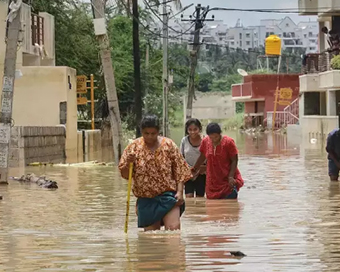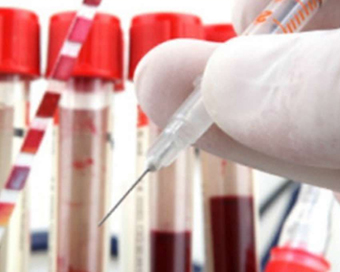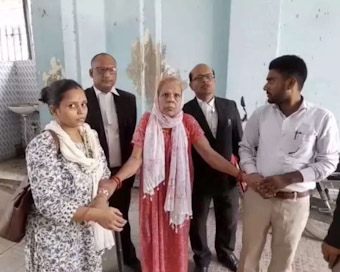 Karnataka rain fury: Photos of flooded streets, uprooted trees
Karnataka rain fury: Photos of flooded streets, uprooted trees Cannes 2022: Deepika Padukone stuns at the French Riviera in Sabyasachi outfit
Cannes 2022: Deepika Padukone stuns at the French Riviera in Sabyasachi outfit Ranbir Kapoor And Alia Bhatt's Wedding Pics - Sealed With A Kiss
Ranbir Kapoor And Alia Bhatt's Wedding Pics - Sealed With A Kiss Oscars 2022: Every Academy Award Winner
Oscars 2022: Every Academy Award Winner Shane Warne (1969-2022): Australian cricket legend's life in pictures
Shane Warne (1969-2022): Australian cricket legend's life in pictures Photos: What Russia's invasion of Ukraine looks like on the ground
Photos: What Russia's invasion of Ukraine looks like on the ground Lata Mangeshkar (1929-2022): A pictorial tribute to the 'Nightingale of India'
Lata Mangeshkar (1929-2022): A pictorial tribute to the 'Nightingale of India' PM Modi unveils 216-feet tall Statue of Equality in Hyderabad (PHOTOS)
PM Modi unveils 216-feet tall Statue of Equality in Hyderabad (PHOTOS) Wedding pics: Mouni Roy marries Suraj Nambiar in South Indian ceremony
Wedding pics: Mouni Roy marries Suraj Nambiar in South Indian ceremony 73rd Republic Day Parade 2022 - In Pictures
73rd Republic Day Parade 2022 - In PicturesJyothi Yarraji, who won a silver medal in the 100m hurdles at the Hangzhou Asian Games, wi
- Lione Messi said Retirement not on my mind
- Indian Wells: Alcaraz, Swiatek win titles
- African footballer chased and thrashed away in Kerala; reports
- Hockey India announce core probable group for men's national camp in Bhubaneswar
- Interim Budget: Large number of institutions of higher learning set up, highest ever medal tally in games reflects high confidence level, says FM
Polio vaccines produced without growth of live virus Last Updated : 02 Feb 2017 02:04:35 PM IST 
(File Photo)
Scientists have identified new ways to provide vaccines against polio which do not require the growth of live virus for their manufacture, thereby reducing risk of virus escaping into the environment.
Polio is on the verge of being eradicated world-wide, but even when it has been officially declared as extinct as a disease, governments will need to continue to vaccinate to ensure against it recurring.
Using current technology, the production of vaccine requires the growth of enormous quantities of live virus, which is then chemically killed, thus presenting a dangerous security risk of virus escaping into the environment.
"Continuing to vaccinate after polio has been eradicated is essential to ensure against the disease recurring, but there are significant biosafety concerns about current production methods," said co-leader of the study David Rowlands, Professor of Molecular Virology at University of Leeds in Britain.
"Our new method of creating the vaccine has been proven to work in lab conditions and on top of that we've proved it's actually more stable than existing vaccines," Rowlands said.
Despite the success of vaccines produced from 'virus-like particles' (VLPs) for hepatitis B and human papilloma viruses, poliovirus VLPs have proved to be too unstable to make practical vaccines.
The research team found a new way to modify these VLPs, also known as 'empty capsids' by identifying mutations which make their structures sufficiently stable to act as vaccines.
The empty capsids change shape when warmed and become unusable as vaccines, but the mutations identified in this research prevent these damaging changes.
These new stabilised VLPs are suitable as replacements for the current killed poliovirus vaccines and can be produced in ways that do not require the growth of live virus, said the study published in the Journal of Virology.
Using the newly developed stabilised VLPs would be best used after the virus has been eradicated, the researchers said.
This study was a lab experiment, which shows stabilised VLPs to be effective in a controlled environment.
Further research using animals (rats and mice) is planned, as part of the essential process of making sure the new VLPs are safe and effective for use in humans, the researchers said.IANS For Latest Updates Please-
Join us on
Follow us on








172.31.16.186







